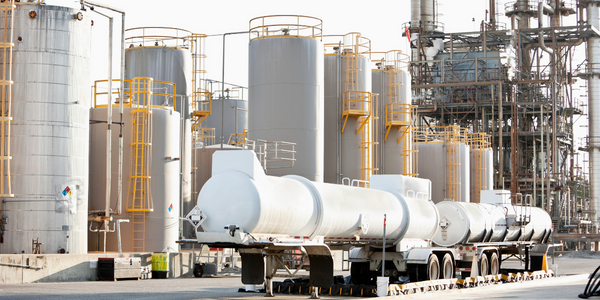下载PDF
Advanced Pharmaceutical Manufacturing

技术
- 平台即服务 (PaaS) - 数据管理平台
适用行业
- 药品
适用功能
- 流程制造
用例
- 过程控制与优化
- 供应链可见性(SCV)
挑战
由于缺乏围绕实际数据的实时协作来帮助改进流程和按时交付订单,部门、工厂车间运营和管理之间的直接沟通是一个持续的挑战。
客户
未公开
关于客户
制药商是技术和信息系统最先进的用户之一。他们的制造流程由多个专用 IT 系统(一些集中式,一些本地化)支持,但这些系统并不总是涵盖
解决方案
从客户订单到生产再到交付,Decisyon 360 允许制造商以独特的方式管理其整个供应链和制造流程——包括工厂内运营和上游/下游合作伙伴。通过应用精益制造原则,一家公司使用 Decisyon 360 制药制造流程解决方案来: - 链接工厂系统以简化信息流并集成工厂运营——连接 ERP、MES、SCADA、LIMS、MHS、TrackWise、遗留系统,和非结构化数据 - 自动安排和执行工厂流程、运营和问题解决 - 消除制药和生产流程中的差距 - 在运营的所有阶段共享信息 - 快速做出可以直接执行回工厂流程的决策 - 连接多个设施, 即使是那些具有不同系统和流程的人 - 在还有时间采取行动时从车间实时捕获详细数据 - 汇总数据以将信号与噪声分开 - 该实施是在连续的步骤中完成的,为移动到下一个部署之前的特定流程或部门。
收集的数据
Communication Performance, Facility Management, Operation Performance, Production Efficiency, Supply Chain Optimization
运营影响
相关案例.

Case Study
Case Study: Pfizer
Pfizer’s high-performance computing software and systems for worldwide research and development support large-scale data analysis, research projects, clinical analytics, and modeling. Pfizer’s computing services are used across the spectrum of research and development efforts, from the deep biological understanding of disease to the design of safe, efficacious therapeutic agents.

Case Study
Fusion Middleware Integration on Cloud for Pharma Major
Customer wanted a real-time, seamless, cloud based integration between the existing on premise and cloud based application using SOA technology on Oracle Fusion Middleware Platform, a Contingent Worker Solution to collect, track, manage and report information for on-boarding, maintenance and off-boarding of contingent workers using a streamlined and Integrated business process, and streamlining of integration to the back-end systems and multiple SaaS applications.

Case Study
Process Control System Support
In many automated production facilities, changes are made to SIMATIC PCS 7 projects on a daily basis, with individual processes often optimised by multiple workers due to shift changes. Documentation is key here, as this keeps workers informed about why a change was made. Furthermore, SIMATIC PCS 7 installations are generally used in locations where documentation is required for audits and certification. The ability to track changes between two software projects is not only an invaluable aid during shift changes, but also when searching for errors or optimising a PCS 7 installation. Every change made to the system is labour-intensive and time-consuming. Moreover, there is also the risk that errors may occur. If a change is saved in the project, then the old version is lost unless a backup copy was created in advance. If no backup was created, it will no longer be possible to return to the previous state if and when programming errors occur. Each backup denotes a version used by the SIMATIC PCS 7 system to operate an installation. To correctly interpret a version, information is required on WHO changed WHAT, WHERE, WHEN and WHY: - Who created the version/who is responsible for the version? - Who released the version? - What was changed in the version i.e. in which block or module of the SIMATIC PCS 7 installation were the changes made? - When was the version created? Is this the latest version or is there a more recent version? - Why were the changes made to the version? If they are part of a regular maintenance cycle, then is the aim to fix an error or to improve production processes? - Is this particular version also the version currently being used in production? The fact that SIMATIC PCS 7 projects use extremely large quantities of data complicates the situation even further, and it can take a long time to load and save information as a result. Without a sustainable strategy for operating a SIMATIC PCS 7 installation, searching for the right software version can become extremely time-consuming and the installation may run inefficiently as a result.

Case Study
Drug Maker Takes the Right Prescription
China Pharm decided to build a cloud-based platform to support the requirements of IT planning for the next five to ten years which includes a dynamic and scalable mail resource pool platform. The platform needed to have the following functions: all nodes support redundancy, ensuring service continuity and good user experience, simple and easy-to-use user interfaces for end users and administrators and good compatibility and supports smooth capacity expansion.

Case Study
ELI LILLY ADOPTS MICROMEDIA’S ALERT NOTIFICATION SYSTEM
Pharmaceutical production is subject to a strict set of enforced rules that must be adhered to and compliance to these standards is critically necessary. Due to the efforts of WIN 911’s strategic partner Micromedia, Lilly was able to adopt an alarm notification infrastructure that integrated smoothly with their existing workflows and emergency hardware and protocols. These raw energy sources enable the industrial process to function: electricity, WIN-911 Software | 4020 South Industrial Drive, Suite 120 | Austin, TX 78744 USA industrial steam, iced water, air mixtures of varying quality. Refrigeration towers, boilers and wastewater are monitored by ALERT. Eli Lilly identified 15000 potential variables, but limitations compelled them to chisel the variable list down to 300. This allowed all major alarms to be covered including pressure, discharge, quantity of waste water discharged,temperature, carbon dioxide content, oxygen & sulphur content, and the water’s pH.






